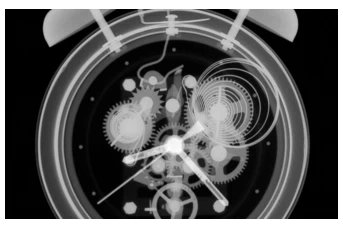Disciplina: Inglês 0 Curtidas
No texto, a pergunta “What time is it?” (L. 1), inserida - FUVEST 2019
Texto para as questões de 73 a 75

What time is it? That simple question probably is asked more often today than ever. In our clock-studded, cell-phone society, the answer is never more than a glance away, and so we can blissfully partition our days into ever smaller increments for ever more tightly scheduled tasks, confident that we will always know it is 7:03 P.M.
Modern scientific revelations about time, however, make the question endlessly frustrating. If we seek a precise knowledge of the time, the elusive infinitesimal of “now” dissolves into a scattering flock of nanoseconds. Bound by the speed of light and the velocity of nerve impulses, our perceptions of the present sketch the world as it was an instant ago—for all that our consciousness pretends otherwise, we can never catch up.
Even in principle, perfect synchronicity escapes us. Relativity dictates that, like a strange syrup, time flows slower on moving trains than in the stations and faster in the mountains than in the valleys. The time for our wristwatch or digital screen is not exactly the same as the time for our head.
Our intuitions are deeply paradoxical. Time heals all wounds, but it is also the great destroyer. Time is relative but also relentless. There is time for every purpose under heaven, but there is never enough.
Scientific American, October 24, 2014. Adaptado.
No texto, a pergunta “What time is it?” (L. 1), inserida no debate da ciência moderna sobre a noção de tempo,
-
corrobora a crença de que a passagem do tempo é uma garantia de renovação para a humanidade.
-
consiste na prova de que “o agora” é a realização de uma troca harmoniosa com o mundo.
-
representa a obsessão dos seres humanos pelo controle da vida com auxílio do relógio.
-
revela o esforço empreendido pelas pessoas na distribuição das tarefas ao longo do dia.
-
mostra o descompasso e a imprecisão relativos à percepção do presente e do passado.
Solução
Alternativa Correta: E) mostra o descompasso e a imprecisão relativos à percepção do presente e do passado.
A pergunta “What time is it?”, no debate da ciência moderna sobre a noção do tempo, motiva o descompasso e a imprecisão relativos à percepção do presente e do passado. No texto:
“If we seek a precise knowledge of the time, the elusive infinitesimal of “now” dissolves into a scattering flock of nanoseconds. Bound by the speed of light and the velocity of nerve impulses, our perceptions of the present sketch the world as it was an instant ago—for all that our consciousness pretends otherwise, we can never catch up.”
Créditos da Resolução: Curso Objetivo
Institução: FUVEST
Ano da Prova: 2019
Assuntos: Interpretação Textual
Vídeo Sugerido: YouTube